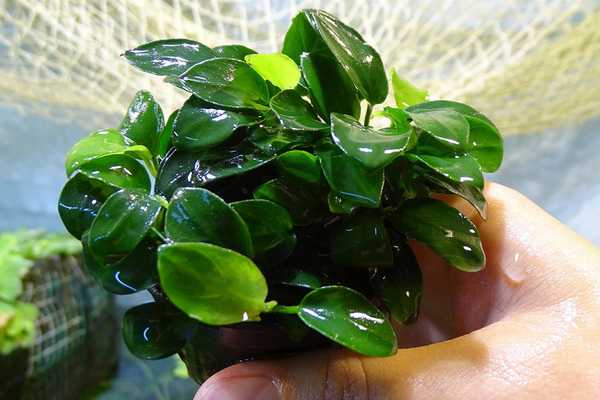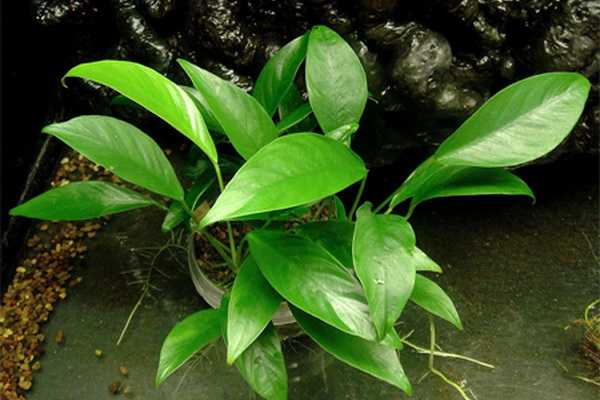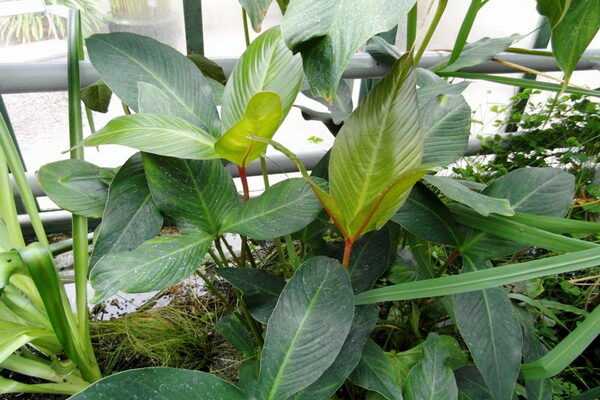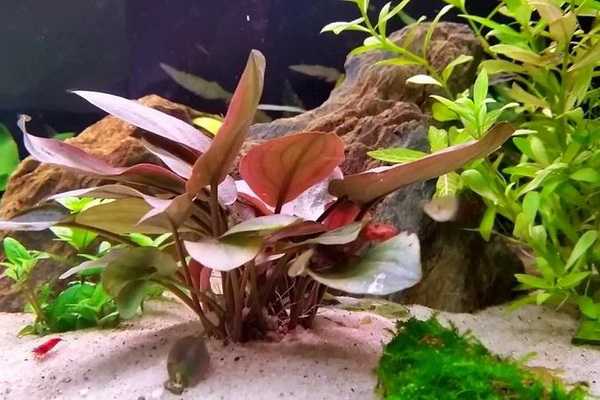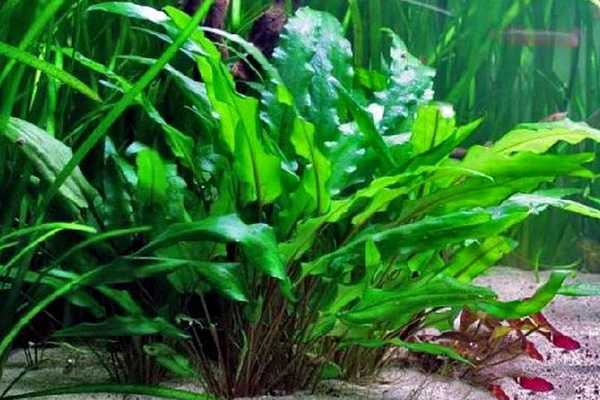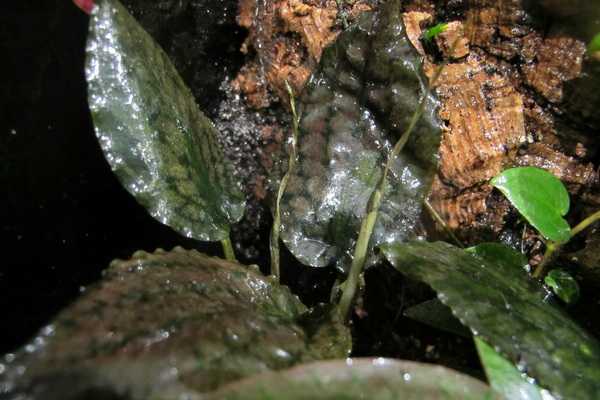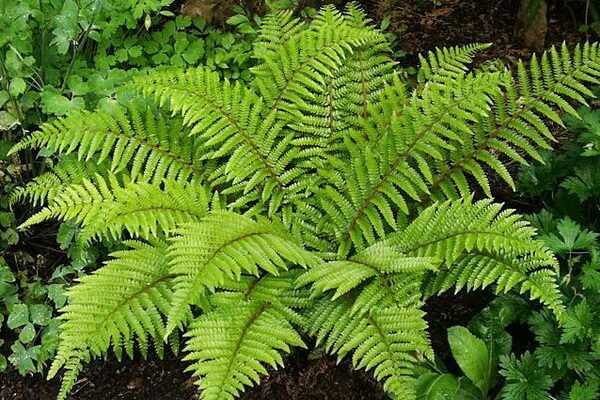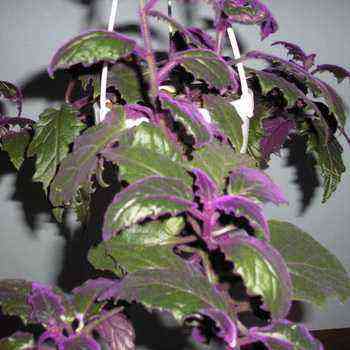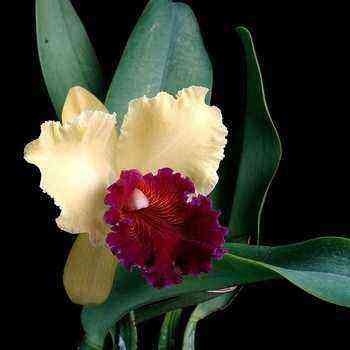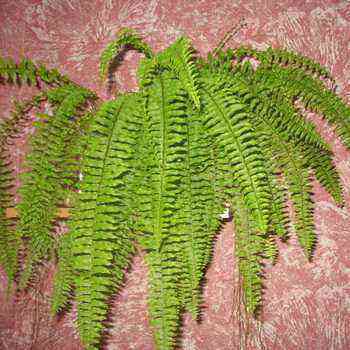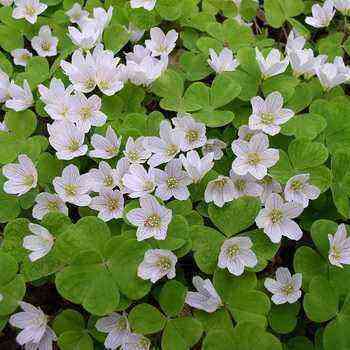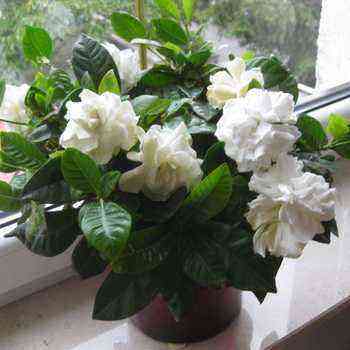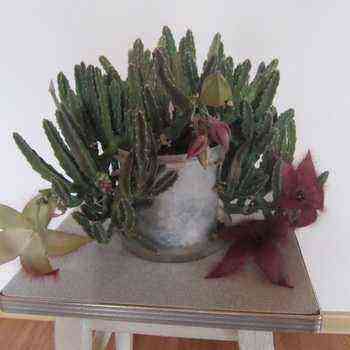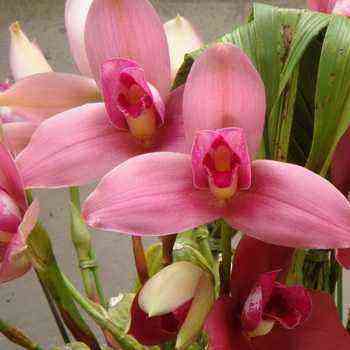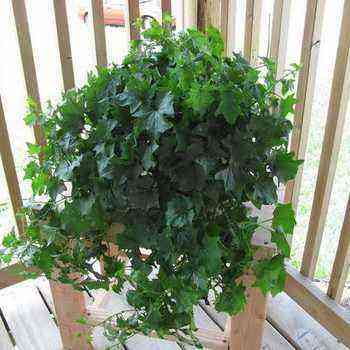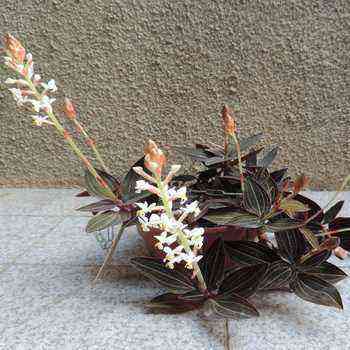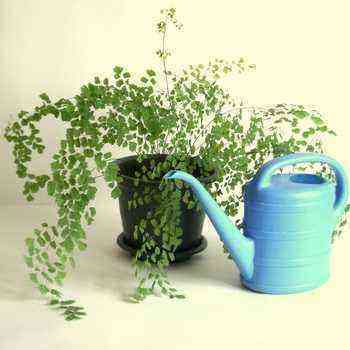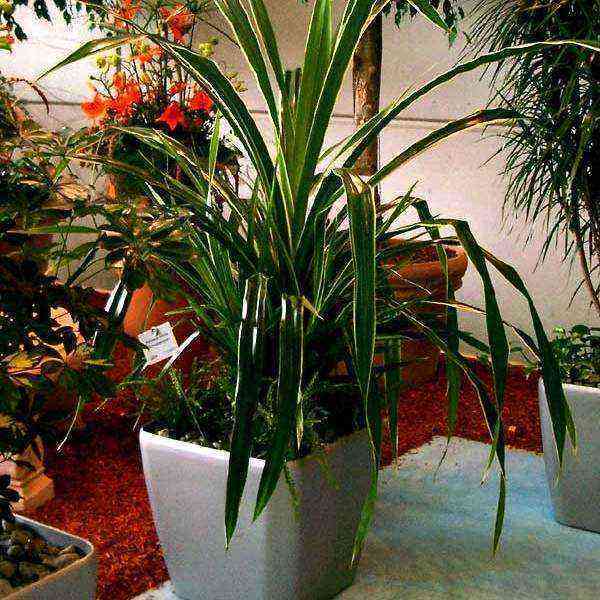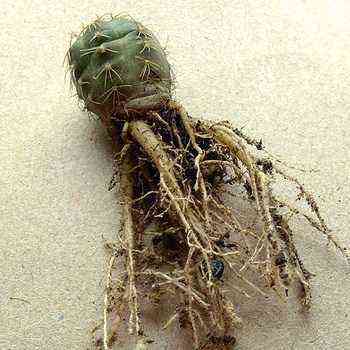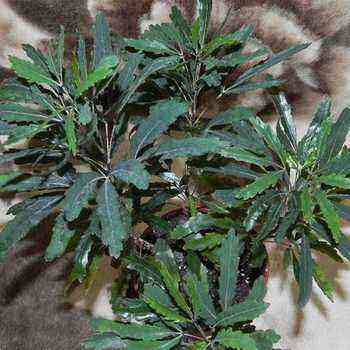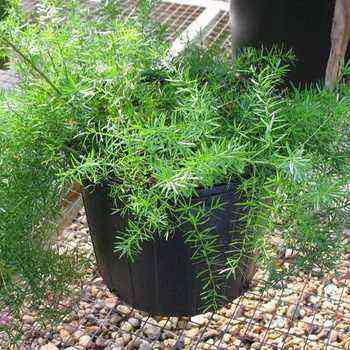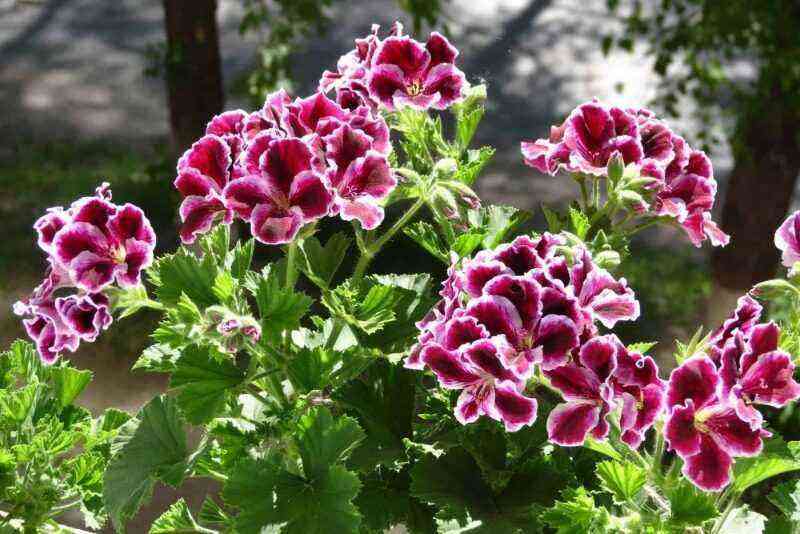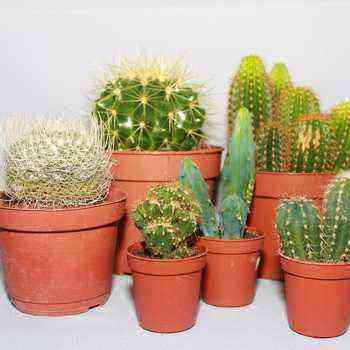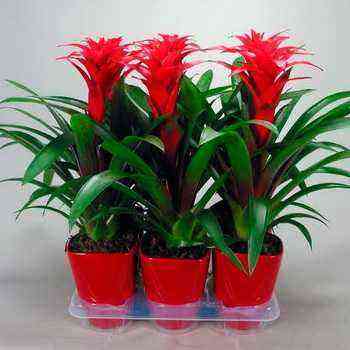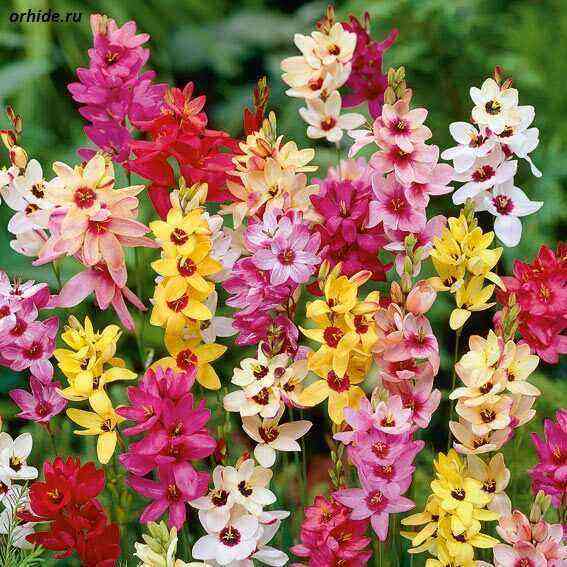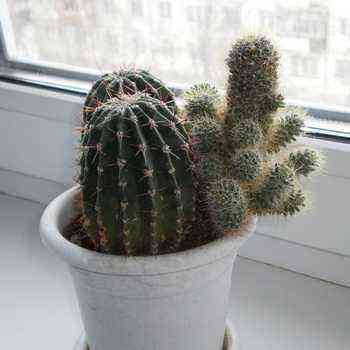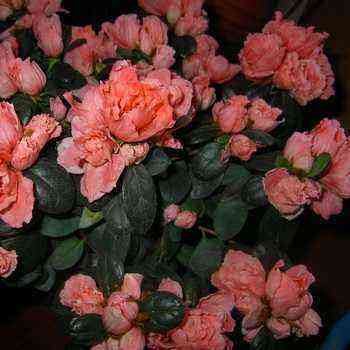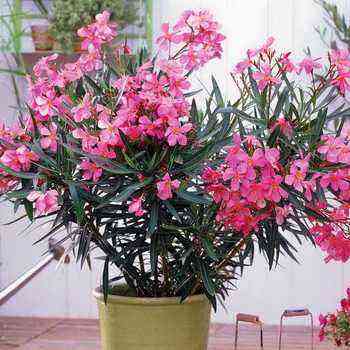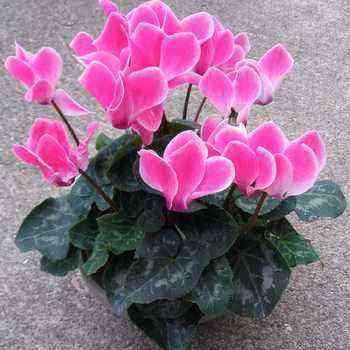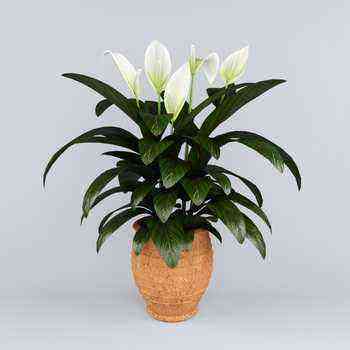
Main groups
Suitable for paludarium:
- Aquatic plants that require rooting;
- Semi-submerged coastal plants;
- Floating grasses that do not require rooting;
- Terrestrial vines;
- Epiphytes (plants that grow on a stem).
The first group includes all plants that are used by aquarists. The main thing is that you like them. And the second condition: there must be an appropriate level of water in the glass container. Preference should be given to Anubias, Cryptocorynes and Aquatic Ferns. Mosses are also ideal for paludarium.
The second group is coastal plants. To prevent the soil from slipping, a stainless steel mesh with large cells is laid on it, into which coastal plants are planted. Roots penetrating the barrier will prevent the substrate from slipping. Coastal plants include cyperuses, lagendars, ludwigs, hygrophils. It is best to arrange them along the side walls of the container.
The third group includes plants, which for the paludarium are a kind of biofilter, which makes it possible to change the water in it not very often. These are duckweed, pistia and riccia.
Plants of the fourth group are best planted in pots. Their choice is wide enough. All kinds of ferns and vines will take their rightful place in the paludarium. This group is located on the shelves located at the side walls and on the back wall. In this case, the shelves should be well fixed.
The fifth group is epiphytes. For the placement of these plant species in the paludarium, it is best to contact experienced specialists directly.
Anubias
Anubias belongs to the aroid family. This is one of the most capricious flowers for paludariums. Its homeland is the tropics of western Africa, where it grows along the banks of small rivers, in swamps outside the water or as a rhizome in the water (only leaves are located on the surface).
The rhizome of the plant is creeping, the stem is shortened, petiole leaves are located on it with a rosette. The leaf blade is quite hard, with a main vein protruding on the underside of the leaf; the venation is pinnate.
Water with a temperature of 25 ° C is suitable for all types of these plants. For their comfortable keeping of Anubias in the paludarium, it is necessary to create a small current. Although the plant is shade-tolerant, it becomes covered with black algae in case of insufficient or excessive illumination, so it is best to arrange the light for it moderate, diffused. When feeding with iron-containing water-soluble fertilizers, the leaves of Anubias grow longer, their color becomes richer.
The soil for planting is the same as for other aroids, but during planting, you can add silt under the roots, which aquarists throw away when cleaning aquariums. If you are unable to obtain such a nutritional supplement, add a small amount of a mixture of clay and peat to the substrate. For the powerful root system of Anubias, which is made up of thick, cord-like roots, the size of the substrate particles is irrelevant.
When buying, try to choose large specimens of Anubias: the larger the plant, the more leaves it will have.
It is undesirable to cut the rhizome, it is better to propagate the plant with lateral shoots, the roots of which are buried in the ground to the base of the leaves. An adult plant with a developed rhizome is planted in the ground, deepening only the roots – the rhizome is left on the surface.
Try not to let the plant bloom, as blooming weakens it. And if you are not going to propagate anubias by seeds, then break off the peduncle. However, reproduction of this plant in this way is a rather long and tedious task, because the seeds are usually defective.
Anubias is a foreground plant. For a paludarium, it can be grown to a snag. The increment process lasts 2-3 months, or even six months.
Anubias var. Barteri Is a slow growing underwater species. Great for paludariums.
Anubias Afzelii -small plant that can be kept in both an aquarium and a paludarium. Instances kept above water grow to a larger size than those grown in water.
Anubias gigantea – a rather large plant, which is why it is unsuitable for aquariums, but the paludarium for this species should not be less than a meter in height.
Anubias gilletii – one of the brightest representatives of the “greenhouse” Anubias. Very popular with collectors for its spear-shaped leaf.
Lagendara Meebold
The birthplace of Lagenandra Meeboldi is South India. One of the most beautiful paludarium plant species. The leaf blade has an elliptical shape and ribbed edges. The size of the leaves is no more than 15 cm in length and 10 cm in width. The dark red color of the leaves gives the plant an extraordinary beauty. The height of the langendara reaches 25-30 cm, which makes it possible to breed it in a small paludarium.
The air temperature in the tank should not exceed 24-25 ° С, the water temperature – from 24 to 28 ° С, humidity – 85-90%. The plant loves partial shade. When kept in a semi-submerged state, an imitation of a weak current is necessary. When cultivated above water, the plant can be planted in a layer of sphagnum, while providing regular sprinkling with soft, settled water.
Propagated by the formation of daughter plants on the rhizomes.
Cryptocoryne
Cryptocoryne is one of the most interesting plants to be placed in the paludarium. In nature, it grows in South and Southeast Asia, on the island of New Guinea, in the Philippine Islands.
Cryptocoryne attracts attention with its decorativeness and variety of species, most of which are decorative. In the conditions of the aquarium, they do not feel well, and in the submerged state they practically do not grow at all, but when placed in the paludarium they turn into a beautiful plant that pleases the eye.
One of the representatives of Cryptocoryne suitable for paludarium is Cryptocoryne striolata. Its leaves are elongated-lanceolate, with a pointed end, similar to a beak; located by a socket. Excess moisture flows down the “beak”, so it is always tilted down. The leaf blade bends in an arc during the day. Without light, the leaves straighten, and the petioles slowly descend.
Each plant has 6-8 leaves on the stem, 10 to 15 cm long and 3 cm wide. Young leaves are dark coffee or chocolate color. Near the petiole, greenery with a bronze tint can be seen from above. Older leaves are so dark that sometimes it seems as if they are black. Dark strokes run along the sheet. The underside is dark red. The edges of the leaves are small-wavy, while the entire leaf blade is covered with tubercles and pits, which persist throughout the life of the leaf.
Due to the fact that Cryptocoryne striolata in nature is found only in a submerged state and grows in a fast current, a strong current has to be simulated in the paludarium; you can create it with a filter or aerator.
The recommended water level for this Cryptocoryne is 4 to 10 cm. The water temperature should be maintained between 25-30 ° C. It is better to plant a plant in a paludarium in a pot.
Ferns
You can meet the fern (Ceratopteris) in any of the tropical regions of the globe. The plant has beautiful, finely dissected, light green leaves, which, under favorable conditions, reach up to 50 cm in height.
Fern care of any kind in the paludarium is always the same.
For the Indian water fern (Ceratopteris thalictroides), a water temperature of about 25 ° C is suitable; at temperatures below 20 ° C, it slows down growth, the leaves become small. The root system is very well developed, but the roots are tender and brittle. As a substrate, a soil for aroid is suitable with the addition of sand to half the volume.
Water fern is photophilous, and artificial light for it should be strong, but shaded. It is advisable to extend the daylight hours for this plant to 12 hours.
This plant does not require special feeding – it has enough nutrition obtained from water and soil. The water should be soft: an excess of minerals has a depressing effect on it.
Ferns reproduce in a rather original way. On the old leaves of the mother plant, daughter plants are formed, which, after the formation of several leaves and root lobes, break off and float to the surface of the water; however, they grow as floating. But this is in the aquarium. In the paludarium, the fern, of course, must be planted in the ground.
The soil is poured without drainage, the roots are distributed in the upper layer of the substrate. Germinating downward, gradually penetrating into the soil, the roots will nourish better. The growth point should not be deepened. The newly planted plant is watered abundantly so that the earth settles and you can be sure of the correct planting. The growth point should be exposed.
All pots in the paludarium are submerged in water at half their height. However, this is not a rule, but rather a piece of advice. If the water level is higher and the pot is completely flooded, nothing will happen to the plants, since they all do well in the aquarium.
One of the problems with paludarium is mold and algae that coat the plant substrates. By themselves, not being dangerous, they tighten the soil and growth points with a film, thereby disrupting the gas exchange processes, which leads to the suppression of the vital activity of plants. If such a nuisance arises, the plants must be transplanted immediately. In this case, the roots are well washed, removing the rotten and damaged ones.
